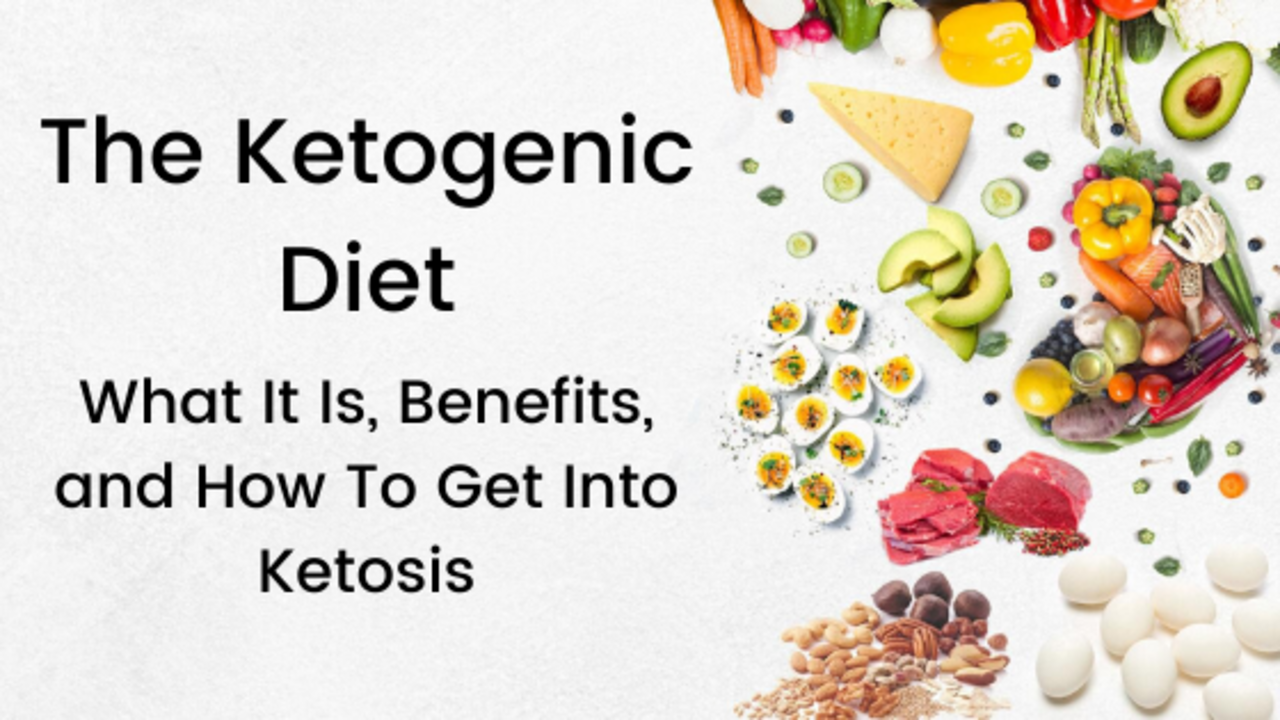
The Ketogenic Diet: What It Is, Benefits, and How To Get Into Ketosis
Jan 07, 2020A ketogenic diet consists of a low-carb, adequate protein, healthy-fat approach to food and drink consumption. When you decrease your carbohydrate intake and subsequently increase your healthy fat and protein intake, your body switches from a sugar-burning state to a fat-burning state, also known as ketosis.
Ketosis is the metabolic state of burning fat for fuel.
By decreasing your carb intake, you decrease the amount of glucose (sugar) coming into your body and therefore decrease the constant spikes in blood sugar and insulin. By doing this, you allow your body to tap into its fat stores and begin burning ketones and fatty acids for fuel rather than relying on sugar 24/7.
The scientific literature supporting a low-carbohydrate, ketogenic diet for weight loss and health is overwhelming. Studies show that going into a ketogenic state can lead to not only significant and sustainable weight loss, but also aid in the prevention and possible reversal of several health-related diseases, such as Type 2 Diabetes, metabolic syndrome, cancer, Alzheimer’s, Parkinson’s, Epilepsy, Fatty Liver disease, and more.
There are many benefits to following periods of time where you're body is thriving on a high quality, whole-food based ketogenic diet and becoming fat adapted.

What are the Benefits of Keto?
Improved Energy and Mood
Because fat and ketones provide a readily available source of energy and keto helps stabilize blood sugar levels in your body, you don’t have those constant dips and spikes in these levels throughout the day. This leads to a higher, yet stable energy level and enhanced mood all day long.
Boosts Cognitive Function, Mental Clarity, Focus, and Memory
This is probably the benefit I love the most! Being fat adapted and dipping into a state of ketosis allows your brain to function at its most optimal level while simultaneously protecting your brain for long-term health. The human brain is made up of nearly 60% fat, so it’s no surprise that our brains can thrive off of fat and ketones when given the opportunity.
Improved Insulin Sensitivity and Decreased Inflammation
Switching from a 24/7 sugar-burner to a fat and ketone burner reduces both the reliance on high insulin production and the number of reactive oxygen species (ROS) in your body that cause damage and inflammation - the primary driver of chronic disease.
Disease Prevention and Treatment
The evidence continues to emerge as the ketogenic diet proves successful in reducing the severity and even reversing common diseases like epilepsy, diabetes, heart disease, non-alcoholic fatty liver disease, Alzheimer’s, Parkinson’s, cancer, and others.
Stabilized Hormones
When you switch from always burner glucose and sugar for fuel, to being able to seamlessly tap into your fat stores for energy, many hormones in your body can begin to stabilize. This leads to various benefits including appetite control, enhanced fertility outcomes, less cravings, more energy, sustained weight loss, and much more.
Anti-Aging and Enhanced Quality of Life
The lowering of oxidative stress and inflammation paired with the balancing of blood sugar, insulin and hormonal levels are just some of the key factors that demonstrate the anti-aging power of keto.
Easier Fat Loss and Improved Body Composition
Not only has a ketogenic diet proved successful for substantial fat and weight loss in a relatively short period of time, but unlike other diets, a ketogenic protocol has shown to be sustainable and enjoyable.
Weight loss means nothing if you can’t keep it off in the long term and that is why so many people have found success when adopting a low-carb lifestyle.
How To Get Into Ketosis
Getting into a state of ketosis generally takes about 2-3 days for the average person. However, the transition can be difficult if you’re not implementing the right tools.

Make sure to follow these guidelines:
- Cut the carbs – Reducing your carbohydrate intake is the first step towards producing ketones. Aim for 50 grams or less of total carbs per day and adjust accordingly.
- Don’t Neglect Protein – Focus on consuming high-quality, nutrient-dense protein sources at every meal. Protein keeps us full, fuels our body, and is essential for maintaining our lean body mass.
- Consume enough healthy fats – Throw your fear of fat out the window and fill your body with the exact fuel you want it to start using for energy – fat! This will ease the transition to become a more efficient fat burner.
- Replenish water and electrolytes – When you reduce your carb intake, your body flushes out more water and takes sodium and other electrolytes with it. This can lead to symptoms of the “keto flu," discussed in more detail in this blog post.

Now, we're just scratching the surface here!
If you want to learn how to individualize keto to fit YOUR specific goals and lifestyle, check out my Keto Kickstart program!
Ready to join a group of strong, confident, badass women?
Don't miss a beat!
Get my weekly tips, exercises, recipes, and more fun stuff to your inbox every Friday.
Your information is safe.


